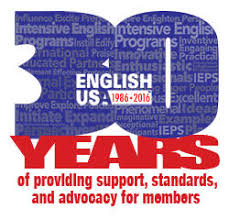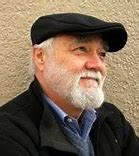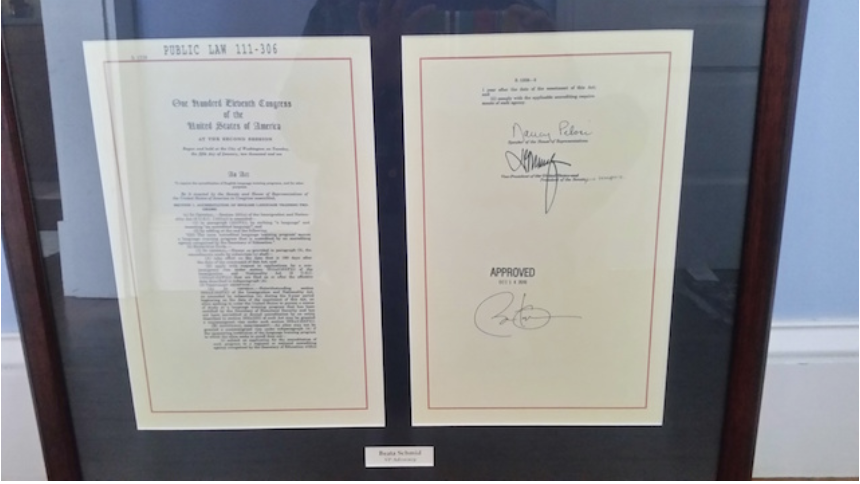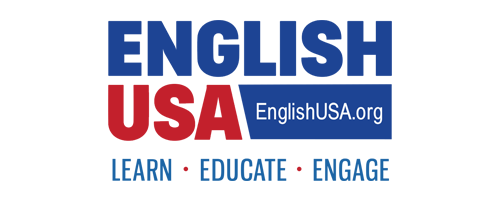30th Anniversary Reflections

1
AAIEP’s First Newsletter(s)
Late in 1989, AAIEP produced its first newsletter. We worked hard to create something that would demonstrate our professionalism. We carefully laid out the newsletter format and asked various Executive Board members to contribute content. We assigned a volume number and an issue number (Volume I, Number 1), confident that sometime, decades or even centuries later, individuals would refer back to our history-making document for insights into the beginnings of the IEP profession.
I was the production editor and as people sent their articles to me, I diligently retyped them into Pagemaker, the new Mac-based publishing program that we had purchased. As we approached our deadline, I received a small package in the mail from our president – Gary Honda. It contained a floppy disk – the common means for sharing files in those days. I opened the file, expecting to find something “presidential” that would provide a commanding presence on the front page of our newsletter. To my disbelief, the file I received wasn’t “presidential” or even “commanding.” Rather, it was pure Gary Honda, who was having a great time exploring the innovative fonts that came with his new Mac computer.
I paused for a moment, wondering if I should give Gary a call and ask him for something a little more ... “professional.” But I realized that the article, with its wording and its font style, represented the heart of the new organization, demonstrating its collegiality, its informality, and most importantly, its fun.*
Michael Steadman
*Copy of 1988 Unofficial 1st Newsletter (check out those fonts!)
2
The people I served with on the AAIEP board in the late 1990’s/early 2000’s were smart idealists who loved life—and who got things done. They’d knocked around different corners of the globe, and knew where to find a good meal/great place to dance, and how to negotiate a business deal in half the capitals of the world. And what they did was animated by a deep belief in our common humanity.
Back then, we were exercised by the INS’ plan to introduce a new fee (the “CIPRIS” fee) for student visa applicants. We allied with NAFSA’s advocacy team, and had a repeal bill sponsored and teed up when 9/11 abruptly changed all the rules for all of us.
AAIEP is the only organization I’ve ever belonged to for which I feel an unreserved affection and respect. Institutions and organizations tend to become self-important and arthritic relatively early on—but, from what I see virtually every day on the listserv, AAIEP is as full of vitality as ever. Congratulations to you all on this milestone—vivat AAIEP!
Peter Thomas
President, 2002-03
3
The #1 memory I have about my years on the board in the Presidential stream occurred at a meeting soon after 9/11. I do not recall specifics-- where the meeting was and so on-- but I remember well the stream at that time (Terry Simons, Peter Thomas, and I) huddling in most serious conversation, concerned how severe the impact of that horrendous event might be. We seriously wondered if the organization would survive or at best would have to go into a "turtle" mode to survive, because we assumed that so many member programs would have financial troubles and among other cutbacks, jettison their memberships.
It was such a relief, and a note of pride, to see how strong the organization became after that time. We grew even larger of course...and now with new and better branding, a great Executive Director in place and other progressive moves, English USA is clearly here to stay. I'm just very proud to have been a member since the early years, to have served twice on the Board, and to see what a strong and vibrant organization English USA is today.
Kelly Franklin
President 2003-2004
4
I am pleased to offer my congratulations to AAIEP/English USA on the occasion of its 30th anniversary. It is hard to believe that 30 years have passed since AAIEP came into being. I was first involved during the years leading up to the formal establishment of AAIEP and remember meetings, typically in conjunction with NAFSA conferences, where the need for an organization like AAIEP was being discussed. I also served as the VP for Standards from 91-92, and as President from 1997-2000. I treasure the contacts I made throughout this time and look back fondly on the time that I spent as a member of AAIEP. I am particularly proud of the impact AAIEP had on the establishment of CEA, and the help and advice it offered to members as student visa issues became more fraught over time.
Best wishes for continued success for another 30 years!


Bill Harshbarger
President, 1997-2000
5
An early memory is of the PSA (Program Self-Appraisal) that members had to submit and the huge task it was when the AAIEP board reviewed every PSA and every member had to submit one. We would haul boxes of these PSA submissions,which usually came in notebooks, to our pre-NAFSA board meetings and sit in someone's hotel room reviewing them. Then the Central Office Director would haul all those notebooks back to Drexel University and store them in the basement of the building where the AAIEP office was located. I remember visiting that building once and being taken to the dark, basement room where all the PSAs had been archived. Once accreditation became a requirement and those with CEA or ACCET accreditation did not need to submit, it helped with that work load. But kudos to all those early board members who reviewed all those PSAs and to Jon Leyland who hauled so many volumes to pre-NAFSA board meetings. I also recall that in the early days of reading PSAs it was suggested (I won't mention by whom, but I am sure he remembers) at a business meeting that the AAIEP directory should, perhaps, include some sort of star-rating (like a Michelin hotel-rating in a tour guide), but that was shouted down and never brought up again that I know of. Probably because in the early days the organization tried very hard to bring all IEPs together to talk about quality programs and serving students, not to compete for ratings. EnglishUSA, the American Association of Intensive English Programs, has continued to bring all program models together over the past 30 years and we have all come to value what we learn from each other. I'm proud to have been able to know this organization from its charter days and know it has a great future. I served AAIEP first as Treasurer, then as V.P. of standards and then as President. Each time I returned to the board, it was a new experience, but it was also always the same because of the dedication each person had toward the success of the organization. I encourage everyone to find time to serve EnglishUSA in some capacity and multiple times.
Jeanne E. Hind, Director
Spring International Language Center
Denver Center
6
The Accreditation Bill
December 14, 2010

Once upon a time, during a serious downturn in IEP enrollments, three Massachusetts constituents from three very different IEPs decided to take action and see their Congressman, Mr. Barney Frank, about the plight of international students. Originally, our meeting was about getting easier access for international students in IEPs. Mr. Frank saw us personally several times, in Massachusetts and in Washington. He was an amazing person in many ways. He had always read our letters and ASKs completely and understood exactly what we needed. His sister worked in an international capacity at a Boston area university, which helped. He spoke very quickly and his mind worked even more quickly. It was slightly intimidating, but exhilarating. Down the road, Mr. Frank became one of our champions for the accreditation bill, in the unlikeliest pair Congress had ever seen: his bipartisan co-signer was Lamar Smith, Republican from Texas. And this constituent, originally an international student herself, was forever in awe of the American constitutional process.
Beata Schmid, EnglishUSA Past President and Past VP of Advocacy (during the very exciting years!)
7
AAIEP’s Role in the Development of CEA
Many professional organizations follow a similar trajectory in their development. An organizations begins as a grouping of individuals who have a common interest in professional development, advocacy, and standards. As the profession matures, its members look for ways to ensure that its members uphold the standards. Accreditation, a process that provides external review conducted by peers, is the logical next step.
Our own profession – that of teaching English to speakers of other languages – has followed this same trajectory. The organizations TESOL, NAFSA, and UCIEP initially provided a means by which professionals could work together in the areas of professional development, advocacy, and standards. None of these organizations alone could provide the focus desired by those who work in a diverse range of IEPs, and so AAIEP was established, with a focus on intensive English programs but with a recognition that quality could be found in many types of programs, regardless of their curricula, teaching methodologies, or administrative structures.
By the early 1990’s AAIEP had become recognized as an organization that encompassed the diversity that is within our field. The AAIEP standards were written to be inclusive of various program types. The PSA process was in place and functioning, but there was recognition within AAIEP, just as there has been within other professions, that self-validation was insufficient. A formal system of peer review was needed, and that most likely meant accreditation.
In 1991-92, the Executive Board took on the task of determining how accreditation of IEPs could be implemented. The Board investigated three options – having AAIEP become an accrediting body, working with an existing accrediting body to take on IEP accreditation, or working with related professional organizations to develop an IEP-specific accrediting organization. The 1991 and 1992 AAIEP newsletters describe the activities of the Board as it worked to identify a solution. After much consideration, the Board determined that AAIEP should not become an accrediting body, since such a role would potentially exclude key AAIEP functions such as advocacy and professional development. The Board also looked at existing accrediting organizations but determined that none met the requirements of AAIEP. The Board concluded that the best approach would be to set up an IEP-specific accrediting organization and that the activity should be done under the auspices of TESOL or NAFSA. TESOL was selected and at the Board’s winter 1992 meeting in Rockville, MD, board members set aside their work for a morning and, cramped together in a hired stretch limo, rode down to TESOL headquarters. The Board was greeted by Terry O’Donnell, a TESOL Field Services office, and Susan Bailey, the TESOL Executive Director. The Board presented its case to TESOL and, as they say, the rest is history.
TESOL sponsored the development of the accrediting organization, generously donating funding and staff time to enable the project to succeed. Individuals from TESOL, NAFSA, UCIEP, and AAIEP were selected to develop the accrediting organization, now known as CEA, and CEA’s success is a testament to the diversity of perspectives that were included the development of CEA standards and accreditation processes. AAIEP played a key role by demonstrating that, indeed, quality could be found among all types of programs, regardless of their size, administrative structure, curricular focus, or teaching methodology.
Michael Steadman
Sources:
